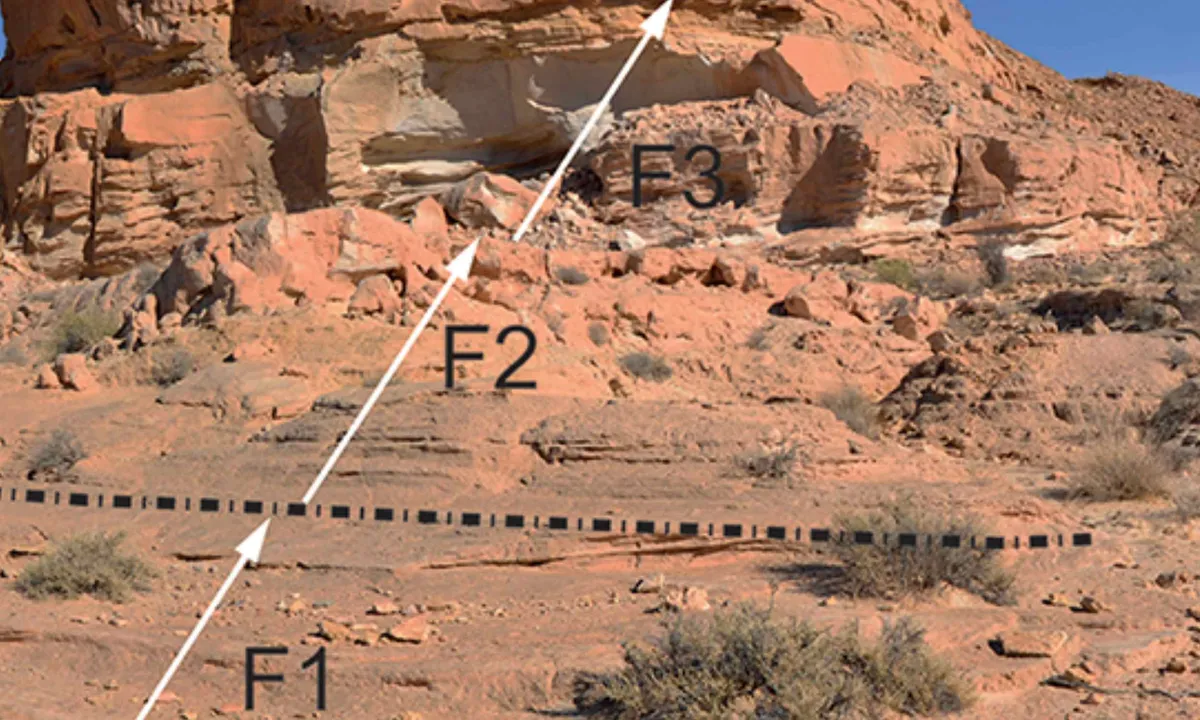
A newly identified dinosaur has garnered significant attention among paleontologists worldwide. This remarkable discovery, named Cienciargentina sanchezi, dates back approximately 94 million years to the Late Cretaceous epoch, marking it as the earliest known member of its family. The announcement of this groundbreaking find was made by Leonardo Salgado from the Universidad Nacional de Río Negro-Conicet, alongside his colleague María Edith Simón.
The research team unearthed fossilized bones in the Neuquén province of Argentina, specifically at the base of the Huincul Formation, an area renowned for its rich array of dinosaur remains. The fossils indicated a dinosaur with a distinctive shape and size, suggesting that it was a notable presence among its contemporaries. The team recognized that unique diplodocoid traits distinguished this animal from others in its class. Notably, sauropods in this lineage commonly exhibit specialized vertebrae and unique skeletal structures, all of which were well-preserved in the fossils discovered at the site.
Experts regard rebbachisaurids as a captivating group of long-necked giants that have been discovered across various continents. These dinosaurs showcase features not commonly seen in other sauropods, particularly in their teeth and vertebrae. In some species, these teeth developed into tooth batteries, a characteristic more prevalent in other dinosaur families. Salgado noted, “This new species adds to the list of rebbachisaurid sauropods documented in the Huincul Formation.” He and Simón identified essential skeletal features that affirm the dinosaur’s classification as an early form of these long-necked herbivores.
Researchers have found that the neck vertebrae of Cienciargentina sanchezi indicate a structure capable of supporting a long, flexible neck. The hind legs were likely robust enough to bear significant weight, a common trait among giants in this lineage. Subtle details in the bones revealed this creature’s identity as a close relative of other known rebbachisaurids. Its considerable size likely provided an advantage against predators, while its plant-based diet would have thrived in the lush environments near streams and floodplains.
Paleontologists are driven to fill the gaps in dinosaur family trees, and the discovery of an early rebbachisaurid is particularly significant. Each new finding sheds light on how these magnificent creatures evolved their body structures and dietary habits. The insights gained from this discovery contribute to a broader understanding of sauropod evolution in South America, offering a clearer view of how various dinosaur groups adapted and survived amidst the changing landscapes of the Cretaceous Period.
Argentina has long been a hotspot for major fossil discoveries, and researchers continue to explore sites for the next significant find that can clarify how giant herbivores traversed the landscape. Evolving methods now allow for more precise fossil dating, while advancements in technology facilitate reconstructions. Digital modeling techniques reveal how muscles may have attached to skeletons, offering insights into how these ancient animals moved in their habitats.
Experts believe that the transition from earlier diplodocoid forms to other sauropod families underscores environmental pressures that influenced survival strategies. Some lineages thrived in expansive, open environments, whereas others adapted to varied landscapes. The discovery of Cienciargentina sanchezi indicates that these transitions were likely more diverse than previously thought, illuminating broader ecological processes. Changes in climate, vegetation, and terrain likely played pivotal roles in shaping dinosaur evolution in complex ways that are still being unraveled.
Fossils like Cienciargentina sanchezi keep researchers engaged and ignite public interest in the exploration of ancient worlds. Both Salgado and Simón view this discovery as a call for continued exploration, suggesting that more early forms could still be hidden in the fossil-rich regions of Argentina. Experts propose that we may have only scratched the surface in places like Neuquén province. Enhanced technology, fresh expeditions, and collaborative efforts pave the way for future discoveries that could reshape our understanding of rebbachisaurid history.
The collaborative efforts between scientists across countries and institutions to analyze and verify these fossils are crucial for accurate identifications. Such teamwork not only facilitates comparisons between new specimens and existing finds from around the globe but also enhances the collective knowledge in the field of paleontology. The story of Cienciargentina sanchezi serves as a compelling reminder that new insights can emerge from every corner of the planet, enriching our understanding of ancient life.
The significance of this 94-million-year-old sauropod lies in its role as a crucial piece that enhances our comprehension of an entire family of dinosaurs. It underscores the importance of exploring less examined geological layers, where new wonders may await discovery. This study has been published in Cretaceous Research, marking another milestone in our quest to understand the rich tapestry of dinosaur evolution.
— Want to stay updated? Subscribe to our newsletter for engaging articles, exclusive content, and the latest updates. Check us out on EarthSnap, a free app brought to you by Eric Ralls and Earth.com.